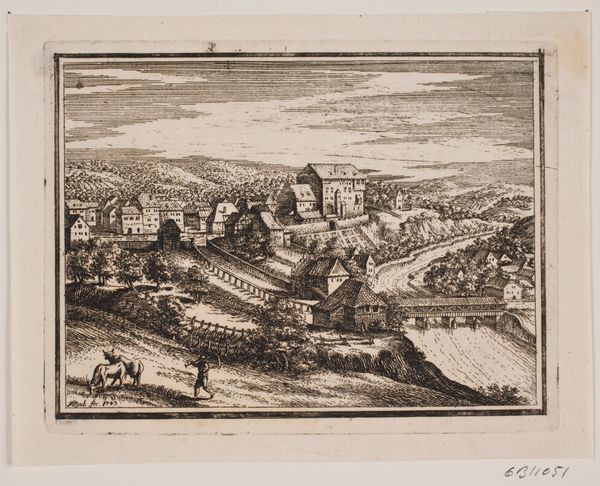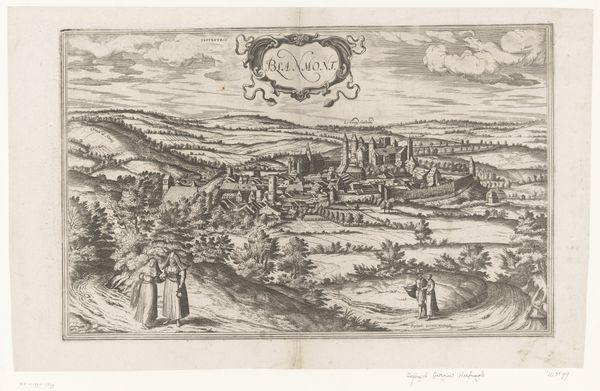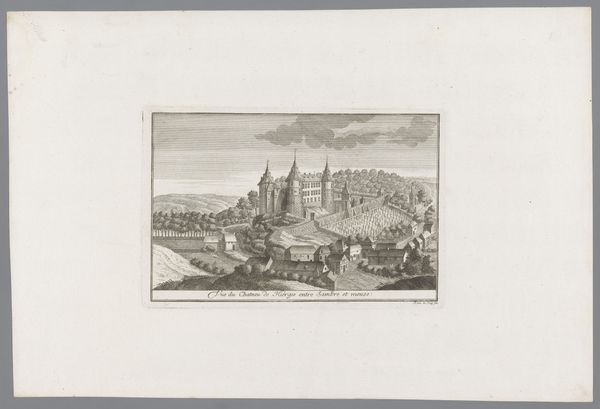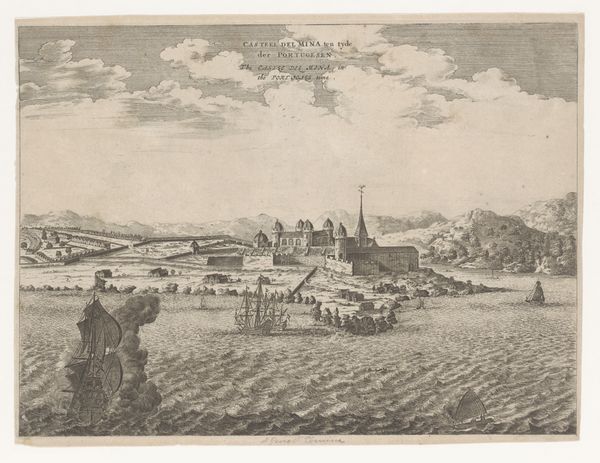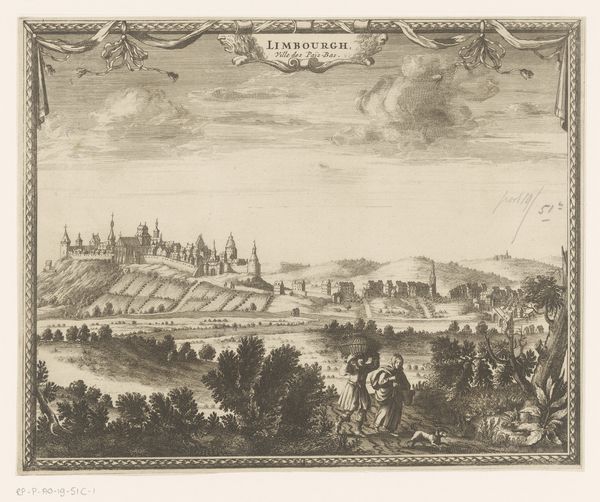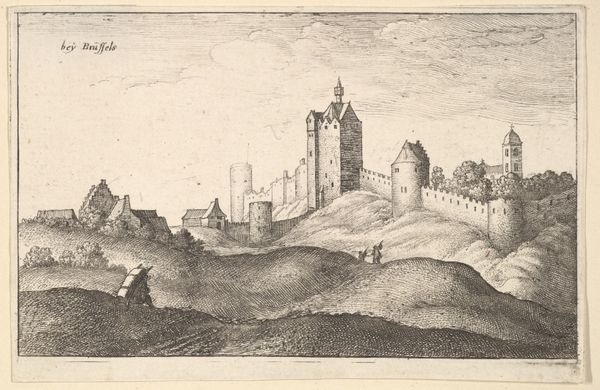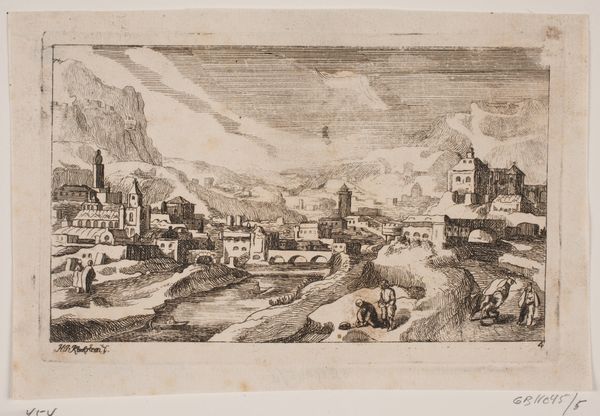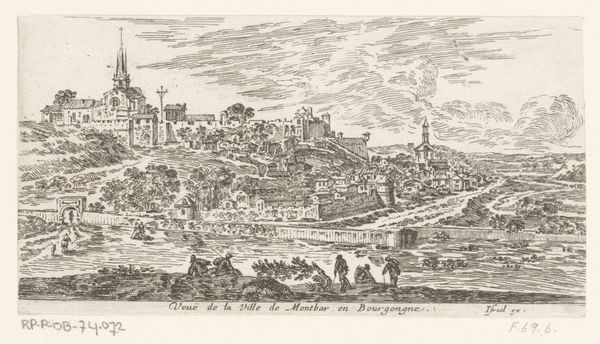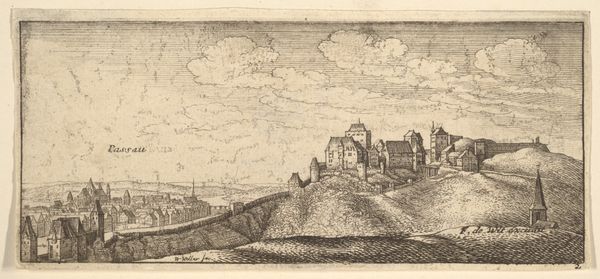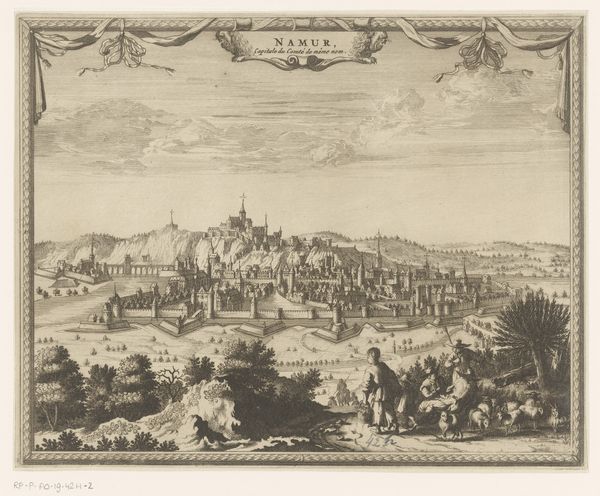
print, etching, engraving
#
medieval
#
baroque
# print
#
etching
#
landscape
#
etching
#
cityscape
#
engraving
Dimensions: 100 mm (height) x 121 mm (width) (plademaal)
Editor: This etching, "En bjergby, ligger til venstre," created in 1743 by Frederik Laub, offers a detailed rendering of a mountain village. There's almost a whimsical feel to this small cityscape; the attention to detail is striking. How do you interpret this work, especially considering its historical context? Curator: It's interesting you use the word whimsical. I see something more complicated. Think about the Baroque period: we see a culture grappling with power, both religious and secular. Landscapes weren’t simply about pretty views; they were about ownership, control, and the projection of authority. Do you see that here, in how the city is positioned atop the mountain? Editor: Yes, I do, now that you point it out. The high vantage point certainly conveys a sense of dominance, doesn't it? And the tiny figure walking toward the city makes it feel even more imposing. Is the medieval influence significant here as well? Curator: Absolutely. Consider the socio-political climate of 18th-century Denmark, a time of strict social hierarchies and land ownership dictating power dynamics. Laub is visually referencing a Medieval aesthetic—look at the architecture. Now consider what that historical "nod" may imply. Who do you think the print was meant for? Editor: Probably the landowners or aristocracy... those with vested interest in maintaining the established order, reminding them of their legacy and reinforcing their sense of legitimacy. This is so much more than a pretty landscape. Curator: Exactly! The print acts as a cultural artifact, legitimizing power structures through aestheticized nostalgia and carefully constructed imagery. We must never accept aesthetic beauty at face value, but critically evaluate its political meaning and its role in either supporting or subverting power. Editor: I hadn't considered the artwork as actively reinforcing those social hierarchies, I guess I was focused too much on just "what" it was representing. Thank you for opening my eyes!
Comments
No comments
Be the first to comment and join the conversation on the ultimate creative platform.
